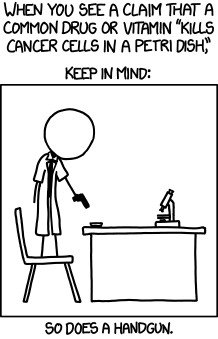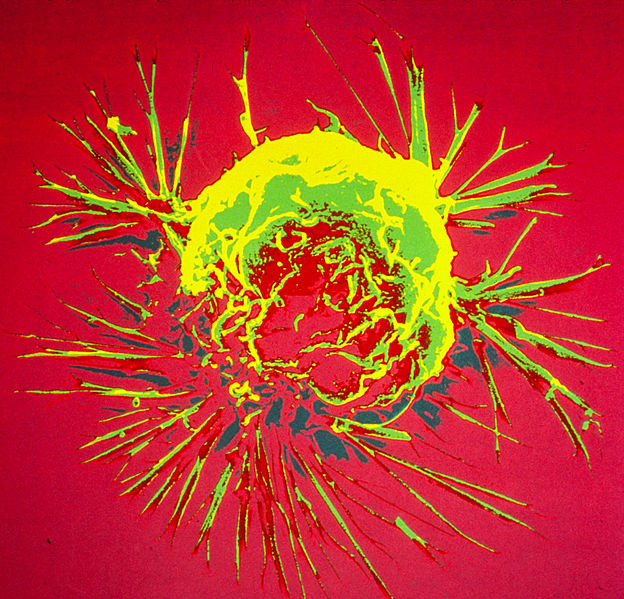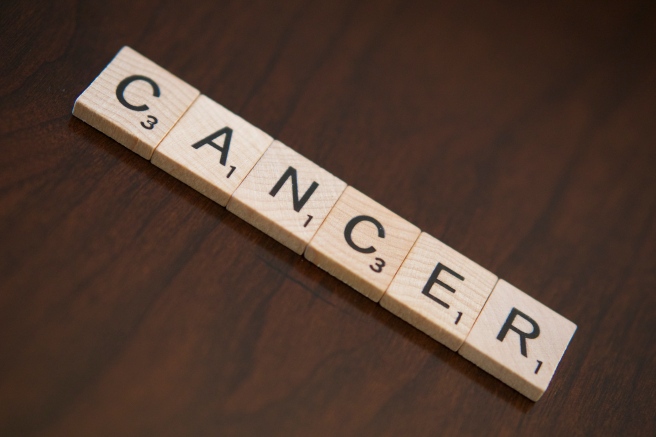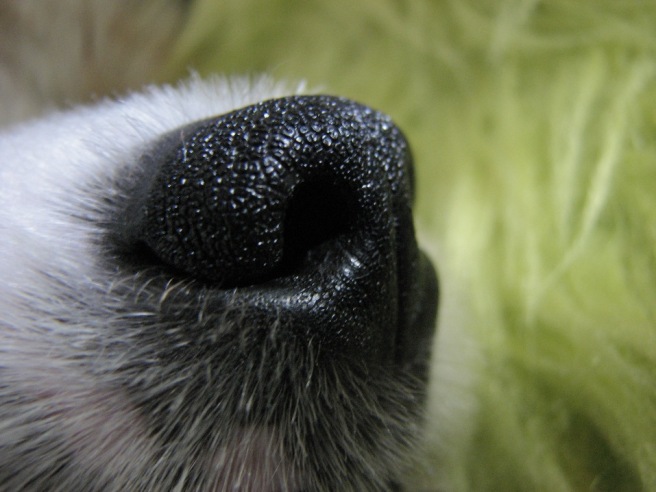Well, as you might have guessed by now, I am a bit fascinated with p53. So, I took some time out and built myself a machine that shrunk me down to the molecular level, with the help of my good friends Hank Pym and Wayne Slazinski. I took a violent journey through one of my cells in my friend Kev’s body (you know, molecules are so jittery in there, it’s like a chemical mosh pit). I had to get an appointment to meet p53 in person for an interview and had to wait for a long time before I saw him. He’s busy, you know? It was a really short interview. Although, it was all worth it, in the end. p53 is an interesting molecule, for sure.
So, this is how it went.
Hello, Mr. p53. It’s an absolute pleasure to meet you!
Yes, it’s a pleasure to meet you, too. You look strange, though. New around here?
Yes, Sir.
Well, I have been informed that you’re here to interview me. Go on, then. I have no time to waste.
Sure. First of all, how did you get the name p53?
Well, you know. We don’t really have names here. But, humans love classifying stuff. So, they made me squeeze through a mesh of gel once, while I was being chased by electricity. Later, they said I weighed 53 kilodaltons. And gave me the name p53 for protein, 53 kilodaltons. And I don’t even weigh 53 kilodaltons! I weigh 43, and some. Do I look fat? No, right?
Are you happy with your name?
No, I’m not. It’s boring. There’s this fellow I know who works at Neuron District, they named him “Pikachurin“. Now, that’s a good name. Who doesn’t love Pokemon? And there’s my good friend, who they’ve named Sonic Hedgehog. With all the work I do, the least they could’ve done is call me DragonSlayer or something.
So, Mr p53. People want to know what you do in Cell City. Could you elaborate on that, please?
Well, it is quite complex. And I don’t really think you’ll understand. But here’s the gist of it, okay? At the heart of Nucleus Town, we’ve got the blueprint for Life, that we’ve received from our forefathers. It’s our holy scripture. You call it the Genome. That is the foundation of All Life. I wouldn’t want to get philosophical, but it’s beautiful. The information to give me life is also stored there, in Chapter TP53. You call these chapters Genes.
Sure, but you still haven’t told us what you do?
Well, while we try to replicate the scripture everytime we expand, some errors do happen. When that happens, shit hits the fan.
Mr p53, I would advise you to kindly refrain from using profanity.
Sorry. I mean, change is necessary. You know? That’s how you improve. If nothing changes, everything will be boring. We do encourage experimentation with the Genome for improvements. That’s how we’ve managed to make it so far. But, sometimes, changes can be bad. Like, I know some fellows here, who are really nice, like Ras. Something goes wrong in his genes [you call it mutation], and he starts acting all weird. Suddenly, he just wants to expand without checking for errors. And he won’t stop. Fortunately, that’s where I come in.
Finally! We get to know what you do!
Will you stop interrupting, man? You mess up my flow.
*pause*
See, I basically look for errors, and if I find them, and act accordingly. The Scripture must remain safe, that’s the plan. So, I either ask my subordinates to correct the error, or I stop the expansion midway. There are many of us involved in this, each of us doing something. Sometimes, when we can’t do anything about the error, we destroy the Cell. It’s painful to watch. But that’s for our own good.You call it apoptosis. It’s named after a Greek word that describes leaves falling in Autumn. Or petals falling from a flower. It’s the balance of life, you see. Birth and death. Ying and yang, you know?
So, is that why they call you Guardian of the Genome?
Yes. I make sure the Genome is replicated faithfully, and nothing like cancer happens. That is essential. Cancer is when we start expanding endlessly and invade other worlds. I try to stop that and usually succeed. But sometimes, something goes wrong in my gene, and I get sort of like, lazy. I don’t do what I’m supposed to do. So if something goes wrong, I don’t really care anymore. So, basically, I am what you call a ‘tumour suppressor‘. If all versions of me go wrong in a body, it can lead to disaster. Anyhow, in about 50% or more cancer, there’s something wrong with me. *sighs*
You’ve been voted “Molecule of the Year” in 1993 by Science Magazine. How do you feel about that?
Well, it was quite an honour, obviously. I felt like all these years of hard work was finally being recognised. And now I’m sort of a celebrity. Like, it’s 22nd January, 2017 today, and already 427 article about me have been published since 1st Jan, 2017. So, you could say I’m quite famous. *winks*
Thank you so much for your time, Mr p53.
No problem, buddy. Be careful when leaving. People who are new get lost in this City. Goodbye!
Goodbye!
And, I was back. So, that’s the story of how I met my hero.
What do you think about Mr p53? Leave it in the comments below!




